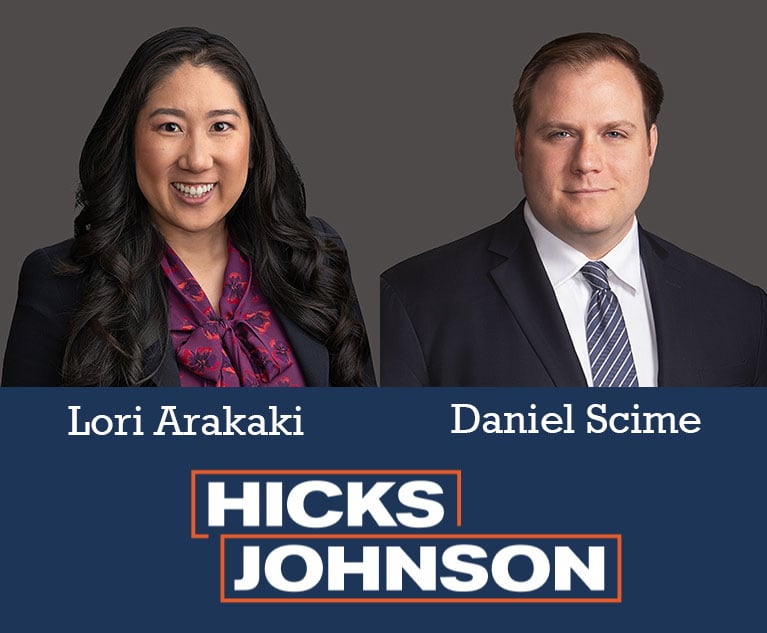27. The Generation Gap and the WFH Debate
Generation Gap Part 1: WFH Like all good debates, all sides of the work-from-home debate have fair points to make. Young lawyers want the flexibility and work-life balance that WFH brings. But they also need to be involved in law firm activities and receive 1-on-1 mentoring. But for lean law, it's the the task that should dictate the location.
May 03, 2024 at 12:20 PM
3 minute read
The original version of this story was published on Lean Adviser
This lesson begins a new series on a topic on which everyone will have an opinion — the multi-generational office. For every story we run, a whole spectrum of attitudes comes out in feedback. Oftentimes, these opinions divide on generational lines. So, in this mini-series we'll examine the different generational approaches to four burning issues in our profession.
This week we start with work from home, or WFH as we've all learned to call it. Then we'll move on to different generational perspectives around talent wars, then working wellness and finally we'll wrap up with law firm culture.
Work from home is an obvious place to start this conversation. Until COVID, this wasn't a thing, far less a debate. Sure, attorneys could work on the road and would spend the occasional summer Friday working from the beach house porch. No one noticed or cared. But there were no WFH policies in place and it was the kind of thing that would have young associates staring out of the office window thinking, "must be nice."
Now WFH is becoming a tug-of-war. Young associates want to work from home and law firm leaders want to see greater attendance levels. Many firms mandate three days a week, and some are moving to four.
Like all good debates, all sides have fair points to make. Young lawyers want the flexibility and work-life balance that WFH brings. Those who were thrown into a hybrid work model because of the COVID pandemic, adjusted their schedules to accommodate spouses, partners, children, aging parents, and the need for their own mental health. And, frankly, they got used to it and see no reason why they should give up their 9:30 am yoga class just to spend time commuting to a likely half-empty office.
But young lawyers also need to be involved in law firm activities and receive 1-on-1 mentoring. Law firms, who shelled out significant dollars for young talent during the COVID and post-COVID talent wars, want to see some ROI on that investment, and many law firm leaders see in-office presence as part of getting it. As much as we may want to dismiss "face time" as an antiquated law firm idiom, it's not only a thing, it's an important one.
We have dissected this at Lean Adviser, and our take is that the task should dictate the location. If your task is to sweat a pile of documents, then we'd say work from home, start early and dive in, preferably uninterrupted. But if it's scoping, planning, issue spotting or creative work, then you need an in-person setting. And if it's client alignment and understanding expectations, again in-person, go see your client.
Once law firms and attorneys start to tackle this from a client problem-solving standpoint, it all becomes a lot clearer. Like everything in lean Legal Project Management, the cues are all to be found in lean manufacturing. What are the tasks? What is the optimum sequence? Who should be assigned to each task? What waste can be eliminated? Where's the end-user (or client) in this plan? Then, for each task ask, identify the right location for efficiency, effectiveness and matter profitability?
Do this, and at a stroke you can resolve many of the challenges associated with WFH. Like, how do young associates learn when they're not in the office? Or they are but the partners are not? They don't. But collaborative planning and sound Legal Project Management addresses all this.
NOT FOR REPRINT
© 2025 ALM Global, LLC, All Rights Reserved. Request academic re-use from www.copyright.com. All other uses, submit a request to [email protected]. For more information visit Asset & Logo Licensing.
You Might Like
View All
Former Federal Judge Christopher Conner Joins Saxton & Stump as Attorney and Shareholder
2 minute read
Gibbons Reps Asylum Seekers in $6M Suit Over 2018 ‘Inhumane’ Immigration Policy
3 minute read
Fellows LaBriola LLP is Pleased to Announce that Alisha Goel Has Become Associated with The Firm
1 minute read
Hicks Johnson Promotes Lori Arakaki and Daniel Scime to Firm Partnership
2 minute readTrending Stories
- 1New York-Based Skadden Team Joins White & Case Group in Mexico City for Citigroup Demerger
- 2No Two Wildfires Alike: Lawyers Take Different Legal Strategies in California
- 3Poop-Themed Dog Toy OK as Parody, but Still Tarnished Jack Daniel’s Brand, Court Says
- 4Meet the New President of NY's Association of Trial Court Jurists
- 5Lawyers' Phones Are Ringing: What Should Employers Do If ICE Raids Their Business?
Who Got The Work
J. Brugh Lower of Gibbons has entered an appearance for industrial equipment supplier Devco Corporation in a pending trademark infringement lawsuit. The suit, accusing the defendant of selling knock-off Graco products, was filed Dec. 18 in New Jersey District Court by Rivkin Radler on behalf of Graco Inc. and Graco Minnesota. The case, assigned to U.S. District Judge Zahid N. Quraishi, is 3:24-cv-11294, Graco Inc. et al v. Devco Corporation.
Who Got The Work
Rebecca Maller-Stein and Kent A. Yalowitz of Arnold & Porter Kaye Scholer have entered their appearances for Hanaco Venture Capital and its executives, Lior Prosor and David Frankel, in a pending securities lawsuit. The action, filed on Dec. 24 in New York Southern District Court by Zell, Aron & Co. on behalf of Goldeneye Advisors, accuses the defendants of negligently and fraudulently managing the plaintiff's $1 million investment. The case, assigned to U.S. District Judge Vernon S. Broderick, is 1:24-cv-09918, Goldeneye Advisors, LLC v. Hanaco Venture Capital, Ltd. et al.
Who Got The Work
Attorneys from A&O Shearman has stepped in as defense counsel for Toronto-Dominion Bank and other defendants in a pending securities class action. The suit, filed Dec. 11 in New York Southern District Court by Bleichmar Fonti & Auld, accuses the defendants of concealing the bank's 'pervasive' deficiencies in regards to its compliance with the Bank Secrecy Act and the quality of its anti-money laundering controls. The case, assigned to U.S. District Judge Arun Subramanian, is 1:24-cv-09445, Gonzalez v. The Toronto-Dominion Bank et al.
Who Got The Work
Crown Castle International, a Pennsylvania company providing shared communications infrastructure, has turned to Luke D. Wolf of Gordon Rees Scully Mansukhani to fend off a pending breach-of-contract lawsuit. The court action, filed Nov. 25 in Michigan Eastern District Court by Hooper Hathaway PC on behalf of The Town Residences LLC, accuses Crown Castle of failing to transfer approximately $30,000 in utility payments from T-Mobile in breach of a roof-top lease and assignment agreement. The case, assigned to U.S. District Judge Susan K. Declercq, is 2:24-cv-13131, The Town Residences LLC v. T-Mobile US, Inc. et al.
Who Got The Work
Wilfred P. Coronato and Daniel M. Schwartz of McCarter & English have stepped in as defense counsel to Electrolux Home Products Inc. in a pending product liability lawsuit. The court action, filed Nov. 26 in New York Eastern District Court by Poulos Lopiccolo PC and Nagel Rice LLP on behalf of David Stern, alleges that the defendant's refrigerators’ drawers and shelving repeatedly break and fall apart within months after purchase. The case, assigned to U.S. District Judge Joan M. Azrack, is 2:24-cv-08204, Stern v. Electrolux Home Products, Inc.
Featured Firms
Law Offices of Gary Martin Hays & Associates, P.C.
(470) 294-1674
Law Offices of Mark E. Salomone
(857) 444-6468
Smith & Hassler
(713) 739-1250








